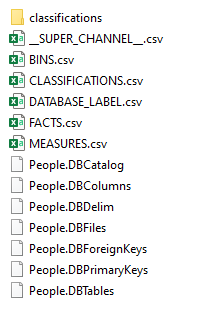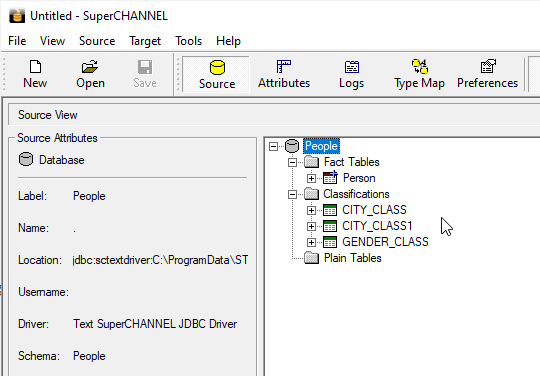Connecting to TDD Data Sources
The Textual Data Definition (TDD) format allows you to create an SXV4 database based on data stored in text files, such as CSV, as an alternative to connecting to a relational database.
This can be useful in situations where data is not available in a database, or is not available in a supported database, and so is extracted to CSV text files instead.
To connect to a directory of TDD files, use the sctextdriver that is supplied with SuperCHANNEL.
For a TDD to be valid, it requires a special set of files called control files, in addition to the files containing your data. These files tell SuperCHANNEL things like which CSV files to use, which separator and line ending characters are used and so on. You will need to create these files using a text editor. See Textual Data Definition Format for more details on the required files as well as a link to download an example set of files that you can use as the basis for creating your own.
The sctextdriver supplied with SuperCHANNEL supports channelling Unicode characters. However, by default it uses the current system codepage. If you want to channel Unicode data, you need to uncomment the str.sctextdriver.encoding setting in the SuperCHANNEL config.txt configuration file.
- In SuperCHANNEL, select File > Connect to Source. The Connect to Source Database dialog displays.
In the Driver field, select sctextdriver.

Click the ... button and browse to the directory containing the TDD files, then click OK.

SuperCHANNEL populates the Location field automatically with the connection string for the TDD driver:

As shown here, the connection string format is
jdbc:sctextdriver:<full_path_to_directory>\<dataset_id>.The dataset ID is indicated by the TDD control files, which will be located inside the selected TDD directory. The control files contain information about the structure of the dataset (such as which files contain data, details about the separator character in these files, and so on). The control files include the dataset ID in their filename, which is in the format
<dataset_id>.<control_file_type. In the example used here, the control files are People.DBCatalog, People.DBColumns, and so on:
In most cases, the Location field will be automatically populated by SuperCHANNEL so you will not need to manually construct the connection string.
Click OK. SuperCHANNEL connects to the TDD and displays the database in the Source View:

For more information about using the TDD format, see Textual Data Definition Format.
